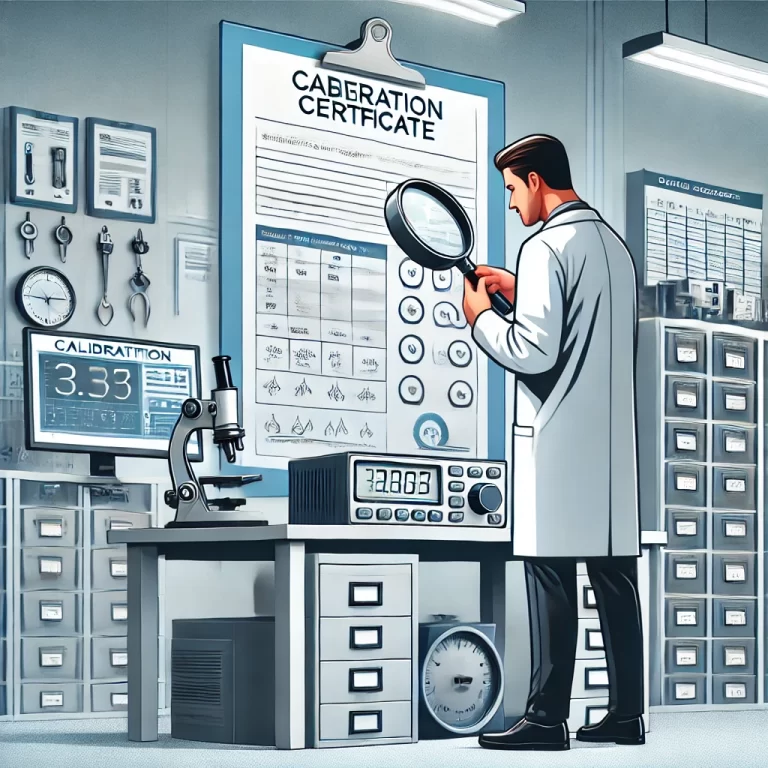Calibration and metrological verification are crucial for enterprises, directly impacting quality control and the accuracy of data. While companies invest significant effort in selecting calibration institutions and managing received data, many are unclear about how to effectively verify calibration certificates. This article provides a detailed guide on how enterprises should verify calibration certificates to ensure the reliability of their instruments.
1. Verification of Calibration Standards and Methods
Upon receiving a calibration certificate, the first step is to verify whether the instruments and reference standards used during calibration comply with regulatory requirements. This includes checking:
The model and specifications of the calibration instruments
The metrological characteristics and performance indicators
The technical basis and calibration methods employed
According to the national standard JJF1104-2003 “Rules for Drafting National Metrological Verification System Documents,” the standard instruments used in verification must have measurement uncertainty or error no greater than one-third of the instrument being tested. Although calibration allows for a specified level of uncertainty, it is essential to assess whether this uncertainty may introduce unacceptable errors into operational processes.

2. Evaluation of Calibration Results
Next, enterprises should evaluate the calibration data provided in the certificate. This includes:
Comparing the calibration results with the instrument’s specifications in its user manual
Determining whether the calibration data meets operational requirements
Unlike verification certificates that explicitly state whether an instrument passes or fails, calibration certificates require careful analysis of measurement data to assess usability. Relying solely on a verification certificate’s “pass” status without reviewing detailed calibration data can lead to the continued use of unsuitable equipment.
3. Case Study for Practical Understanding
Consider the following example to illustrate the importance of calibration data analysis:
A company purchases a voltmeter with a 400V range, allowing a maximum error of 0.4V. The company requires the instrument to have a maximum operational error of 0.5V. After verification, the instrument is certified as compliant because its error does not exceed 0.4V, aligning with both the instrument’s specifications and the company’s requirements.
Later, the company acquires a 600V voltmeter with a standard error limit of 0.6V. Verification confirms the instrument is compliant, but the actual measured error is exactly 0.6V, which exceeds the company’s operational limit of 0.5V. Despite passing verification, this instrument is unsuitable for the company’s needs. In this case, reviewing the calibration certificate’s detailed data would have highlighted this mismatch.
4. Key Steps for Enterprises to Confirm Calibration Certificates
To effectively confirm the validity of calibration certificates, enterprises should follow these two essential steps:
Compare Calibration Data with Instrument Specifications
Review the calibration results against the instrument’s design and operational standards to identify any significant deviations.Assess Suitability for Operational Requirements
Evaluate whether the calibration data aligns with the company’s specific operational needs, ensuring that the instrument can be safely and effectively used in daily tasks.

5. Additional Considerations
Uncertainty Analysis: Although calibration allows for a defined uncertainty, enterprises should evaluate how this may impact operational precision.
Document Management: Properly archive calibration certificates and related documents for future reference and audits.
Regular Reviews: Periodically review calibration certificates to ensure ongoing compliance with evolving operational standards.
Conclusion
Effective verification of calibration certificates is vital for maintaining product quality and operational safety. By thoroughly checking calibration standards, analyzing calibration data, and aligning results with operational needs, enterprises can make informed decisions about the usability of their equipment. This proactive approach ensures that measurement tools remain reliable and contribute to consistent product quality.
